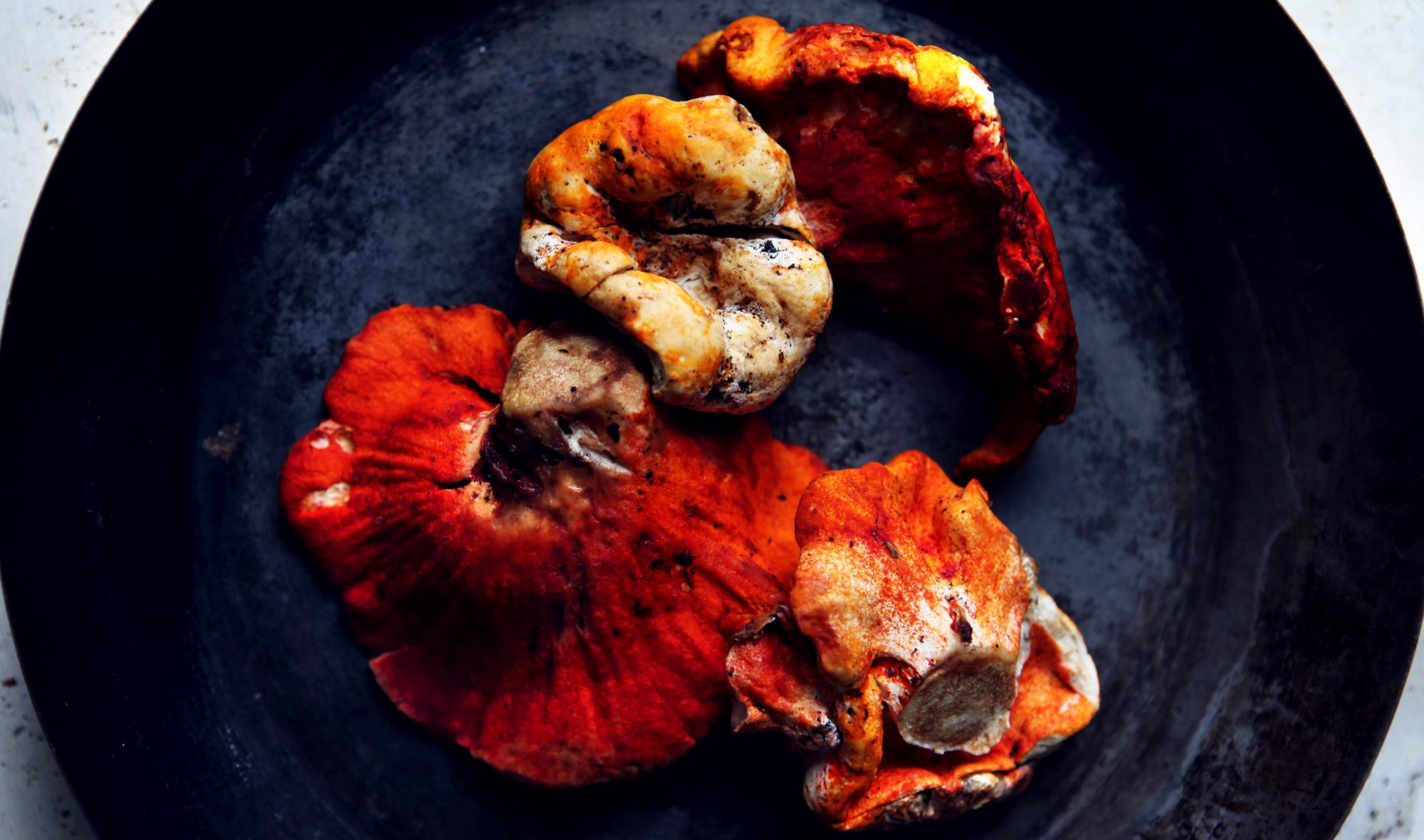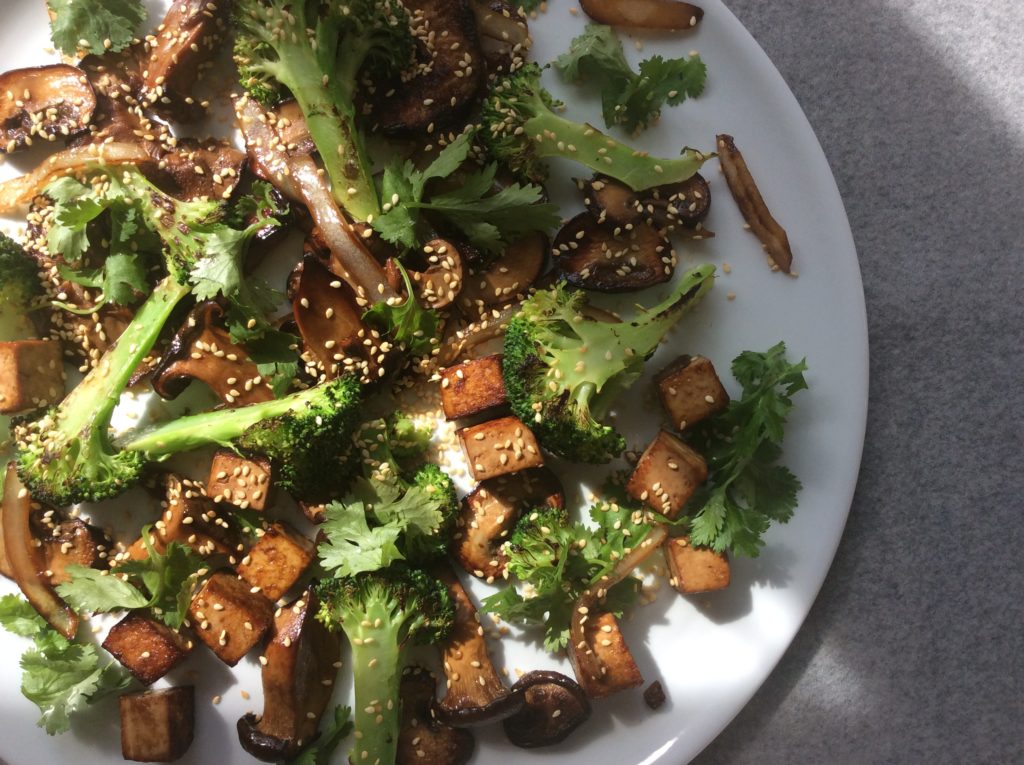
💰 This week only: Save $250 USD on the PN Nutrition Certification!

Edible mushrooms are the fleshy and edible fruit bodies of various species of macrofungi. They can grow either underground or above ground. High in vitamin D and other vitamins and minerals, mushrooms are eaten for their nutritional value and taste and also in some cultures for their medicinal properties. They can be harvested wild or cultivated, and eaten fresh or preserved.
Edible mushrooms are the fleshy and edible fruit bodies of various species of macrofungi. They can grow underground or above ground, and may be harvested wild or cultivated.
Mushrooms are one of the few unfortified food sources of vitamin D. They are also high in other vitamins and minerals. Mostly eaten for their texture and delicious taste, in some cultures they are also chosen for their medicinal properties. In their fresh state, cultivated mushrooms can be enjoyed raw or cooked. They can also be preserved, typically by drying. Wild mushrooms should only be eaten cooked.
The ancient Chinese were among the first to enjoy mushrooms, and China is still one of the world leaders in mushroom cultivation. Other leading producers include the United States, France, the Netherlands, and Poland.
Most edible mushrooms are white, brownish, yellow, purple, or greyish. Typically, they have a stem and a head which can look smooth, like a cap, or frilly, like a fan.
Commercially grown mushrooms are easy to find. They’re sold in markets all over the world and in supermarkets in the produce section. You can also find preserved mushrooms in tins or dried in bags or boxes.
The most common cultivated mushroom is the white button mushroom, but ten species are grown commercially, including shiitake mushrooms and oyster mushrooms.
Wild species include highly prized varieties such as the boletus and the chanterelle. But unless you’re an expert, don’t eat mushrooms in the wild. Many poisonous species are easily confused with the edible varieties. In addition, even edible wild mushrooms may cause allergic reactions in some people. Others may be toxic due to the growing environment; for example, because they are so porous, mushrooms easily absorb heavy metals. For all these reasons, it’s better to leave identification to those who really know their fungi, to exercise care in eating any wild mushroom for the first time, and to cook all wild mushrooms before eating.
One cup of sliced white mushrooms contains about 15 calories, 2g of protein, 1g of fiber, and no carbohydrates or sugar.
So why are mushrooms considered nutritionally valuable? They’re the only unfortified food source of vitamin D. They’re also a good source of the B vitamins including niacin, riboflavin, and pantothenic acid as well as minerals like selenium and potassium.
Many species of mushroom are high in beta-glucans, which improve immunity, aid in resistance against allergies, and may help our bodies metabolize fats and sugars more effectively. So it’s true that mushrooms can have medicinal properties!
Choose mushrooms that look fresh and unblemished. They should not be shrivelled or slimy. Stems should be firm and have a uniform color.
Extremely fresh mushrooms may appear to have a sort of papery fuzz on them. That’s a good sign.
Keep fresh mushrooms in a paper bag in your fridge. They will last a few days. Do not put them in plastic because it makes them slimy.
To prepare mushrooms, wipe each one with a damp cloth, or wash them in cool water, brushing if necessary. If you choose to wash, do it immediately before cooking, dry them quickly on a kitchen towel, and never leave mushrooms sitting in water. Water makes them soggy and slimy.
Slice a small bit off each stem, and then cut up if you like. Cultivated mushrooms can be eaten raw as is, with dips, or in a salad.
Commercially grown fresh or dried mushrooms and wild fresh or dried mushrooms can also be cooked in a variety of ways. Popular methods include sautéeing, stir-frying, broiling, and stuffing.
Mushrooms pair well with many flavoring agents, herbs, and spices. They’re delicious prepared with wine, parsley, olive oil, balsamic, soy sauce, ginger, onion, garlic, cream, and cheese. Their meaty flavor and texture can be a real boon to the plant-based diet (or any plant-based meal).

Meaty rich mushrooms get a big dose of flavor with the addition of asian inspired ingredients, while the broccoli and cilantro keep things super fresh and light. Great for a quick midweek dinner, and bring the leftovers for lunch.
Prep Time: 20 minutes Cook Time: 20 minutes Yield: 4 side portions
Combine the mushrooms, tofu, rice vinegar, sesame oil, and tamari in a bowl and mix to combine.
In a large wok or frying pan, toast the sesame seeds on high heat until they turn golden brown and fragrant, about 5 minutes. Remove seeds to a small bowl, and return the pan to high heat. Add the mushroom mix to the pan, spreading them out into an even layer as much as possible.
Add the olive oil, onion, garlic, and ginger. Stir once every minute or so, until mushrooms and tofu caramelize and darken, about 10 minutes.
Remove from the pan into a bowl and add the broccoli florets in a single layer on the bottom of the pan. Cook on high heat until the broccoli gets charred and is cooked about halfway through.
Mix with the mushroom mixture, toss in the cilantro, and garnish with the toasted sesame seeds and salt to taste.
Store leftovers in fridge.
Enjoy!
Precision Nutrition’s Encyclopedia of Food expands every single month as we highlight new foods and showcase beautiful food photography. If you’d like to stay up to date, simply click this link. From there, we’ll send you a FREE copy of our recipe book. We’ll also let you know when new and delicious foods are added to the site.
Edible mushrooms are the fleshy and edible fruit bodies of various species of macrofungi. They can grow either underground or above ground. High in vitamin D and other vitamins and minerals, mushrooms are eaten for their nutritional value and taste and also in some cultures for their medicinal properties. They can be harvested wild or cultivated, and eaten fresh or preserved.